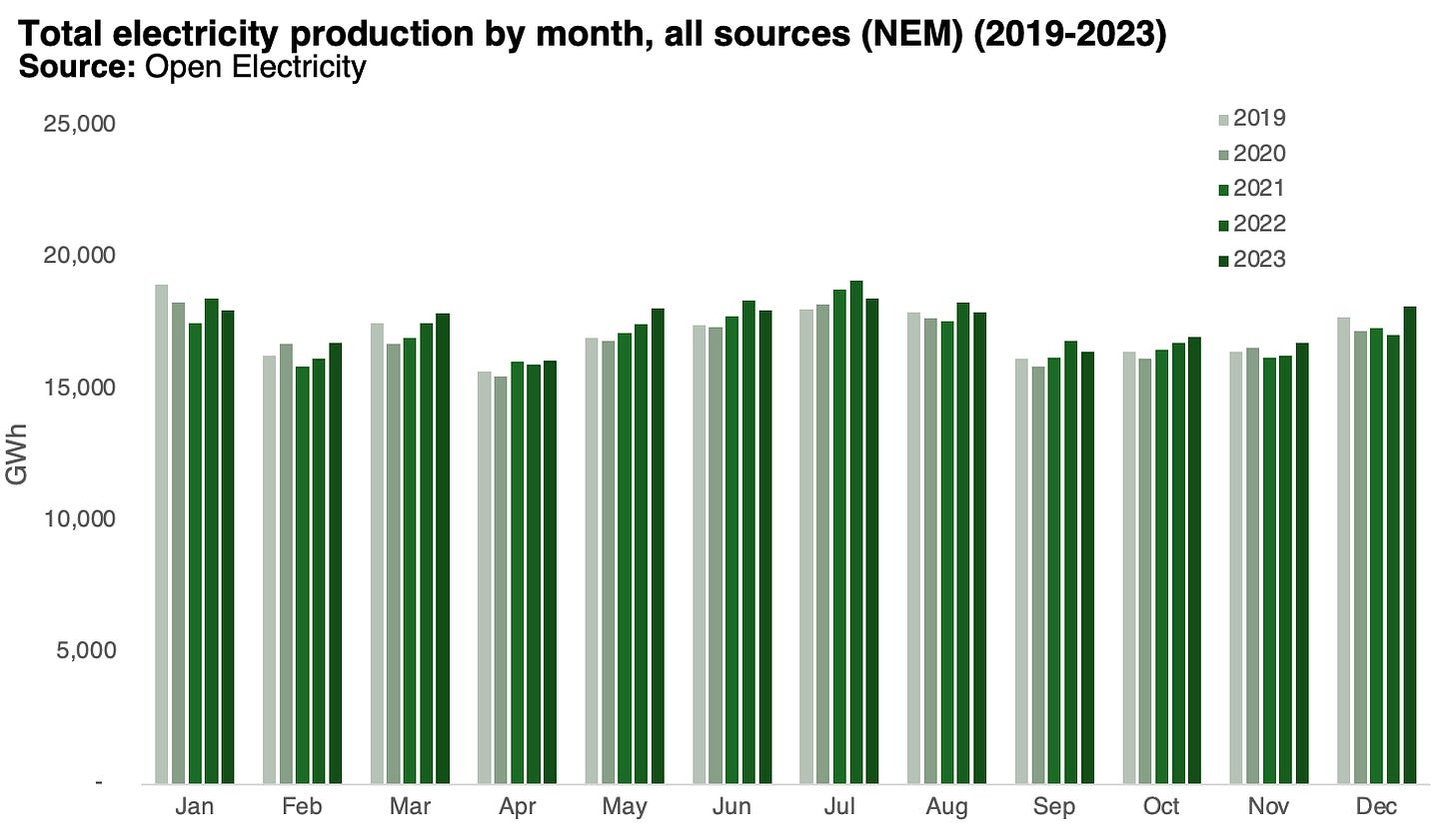Why is spring the record-smashing season for Australian renewables?
Australia is nearing a major renewable energy milestone. But why does the market share of renewables peak in spring, and not the sunny summer?

Spring is my favourite time of year. We re-emerge from the winter, as do the leaves on the trees and the bulbs in the garden. There are footy finals and Floriade, and the weather is perfect.
Spring also happens to be the season of setting records for Australia’s renewable electricity sector.
As RenewEconomy noted last week, Australia’s main electricity grid - the National Electricity Market (NEM) - has set a flurry of new records for renewable energy penetration since the start of spring. For extended periods in September and early October, almost three-quarters of electricity demand was being met by wind, solar and hydroelectricity.
On Tuesday morning, the Australian Energy Market Operator (AEMO) reported a new instantaneous peak in renewable energy market share for the NEM - which spans Queensland, New South Wales, Victoria, Tasmania, South Australia and the ACT.
At 11:30am, the market share of renewables hit 73.7 per cent.

The NEM has come close to breaking that record almost every day since - pushing back above 70 per cent renewables at some point. It is not just instantaneous peaks that are setting new highs; renewables met more than 45 per cent of the NEM’s electricity demand in September - itself a new record for full-month market share. While it is early days, renewables could be on track to challenge the 50 per cent mark during October.
The prospect of renewables crossing the 75 per cent threshold for the first time, even if only briefly - and 50 per cent for a full month - would mark major milestones. It would demonstrate the electricity market’s ability to reliably operate at very high renewable energy levels.
AEMO says its “goal is to co-design and co-engineer the NEM and the WEM to manage 100% instantaneous penetration of renewables at any moment on any day by 2025.”
That would truly be a landmark moment for not just Australia’s electricity system but also a globally significant milestone for an Australian grid that is longer and geographically stretched out compared to the grids of most other countries.
But why is spring the month for record renewable energy penetration? Why not summer, when one would presume an abundance of solar energy would be flooding into the grid?
There are several important factors that align in the spring.
Here comes the sun
The most obvious factor is that spring marks the transition between winter and summer. With the coming of spring comes longer, sunnier days that provide a dramatic boost to solar energy production.
This is not rocket science. Solar irradiation increases dramatically the closer we get to summer. In Chinchilla, Queensland - home to the state’s largest solar farm - irradiance doubles over the spring, and output increases correspondingly.
The winter-spring differential is larger the further south you go. In Canberra, there is around three times as much sun in spring as in winter. Solar generation within the NEM in November usually has more than twice the solar energy production of June.
A more subtle factor that drives the apparent growth of solar power in the spring is that throughout autumn and winter, the renewables industry is busy adding more solar panels to the system, installing more solar on residential homes and building new utility-scale projects. Once the sun re-emerges in the spring, the additional solar capacity results in a noticeable skew in solar output across the calendar year.

While solar irradiance is higher in January and February, more solar electricity is produced during October and November due to the additional solar panels installed in the intervening months.
But not too much sun
While spring marks sunnier days, the season also benefits from the milder temperatures that help to keep the overall demand for electricity low.
The overall production of renewable electricity is highest in the summer, being the peak season for solar energy production. However, average demand is also at its highest in the summer due to the increased use of energy-sucking air conditioners. Winter is also a period of high energy demand, with many turning on electric heaters to beat the chill at home or at work.
The comfortable temperatures of spring mean most of us can make it through the season without turning on either the heater or the air conditioner.
Importantly, lower electricity demand generally means lower output from coal and gas generators. Due to the fact coal and gas are more expensive sources of electricity, they are usually the first to get pushed out of the market when demand falls.
In spring, coal generation is around 11 per cent lower than it is during the rest of the year (from a high base), while gas generation falls by more than 25 per cent (from a much lower base). Meanwhile, cheaper renewables remain in the market, and their overall market share increases as a result.
For a more detailed explanation, the team at Currently Speaking have written an excellent breakdown of how the wholesale electricity market works here.
What about wind?
Wind generation is often characterised as the most variable source of electricity generation, reflecting its tendency to vary considerably within short periods of time.
However, over longer timeframes - such as over a full month - wind exhibits a reasonably steady level of output that is comparable to other sources (wind output is even less variable than gas generation on a monthly timeframe).
Wind also shows a level of seasonality that is somewhat inversely related to solar output - peaking in the winter months and falling slightly across summer and autumn. Relevant to this analysis, wind generation remains elevated during the spring, making a small contribution to its status as the record-breaking season.
The goldilocks season for renewables
So, spring experiences a convergence of factors that all contribute to the season being the time of year when the renewables sector smashes records for market share.
Spring sits in a renewables sweet spot; increasing solar production, higher than average wind production (but only slightly) and milder temperatures that help suppress electricity demand and push out coal and gas.
It also has flow-on benefits for both consumers and the environment. My rough analysis of the last 10 years of grid data suggests that during spring, wholesale electricity prices are more than 20 per cent lower than the annual average. Likewise, the emissions footprint of the grid is about 7 per cent lower in spring compared to the average across all four seasons (emissions generally peak in winter).
A couple of notes to finish on
This analysis relied heavily on the energy market data available through the Open Electricity platform (previously known as OpenNEM). It is a very valuable service that is provided for free by The Superpower Institute, and it is worth checking out if you are curious about electricity grid data.
Keep an eye on RenewEconomy, which has consistently reported on the records being set by renewables during the spring.
I recently attended New York Climate Week and prepared a write-up of an interesting speech given by former New Zealand prime minister Jacinda Ardern at the week’s opening ceremony. Ardern touched on the need for climate action to transcend the currently volatile geopolitical environment. You can read her comments here:










Always wondered about this, nice write up!